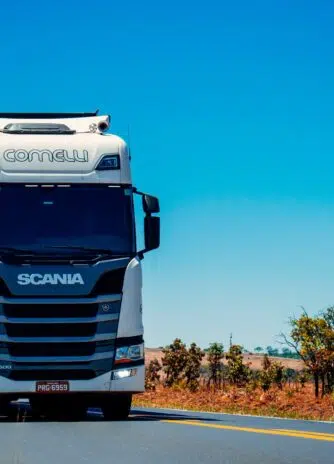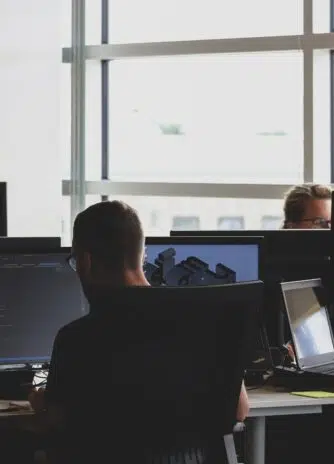Legacy systems may still function, but many quietly limit performance, multiply risk, and hide costs. Here’s how CtrlF5 helps companies upgrade wisely—without disruption or regret.
Why Legacy Systems Are a Hidden Risk in 2025
If your systems were built for a world that no longer exists, they’re not just outdated—they’re vulnerable.
From technical debt and vendor lock-in to geopolitical dependencies and compliance drift, legacy architecture now poses strategic risk, not just operational inconvenience. With AI adoption, ESG expectations, and regulatory shifts reshaping the market, businesses can’t afford to build tomorrow on yesterday’s technology.
At CtrlF5, we specialize in modernizing legacy systems—without breaking what still works, and without disrupting the flow of your business.
Modernization Begins with Visibility
Many companies don’t realize how much their legacy systems are obscuring costs, workarounds, unused features, and hidden risks. CtrlF5 brings visibility before anything is changed—because you can’t evolve what you can’t see.
Insight Cue: Modernization starts not with migration, but with illumination.
Legacy Modernization Is a Business Decision, Not Just an IT One
We start by aligning every modernization plan to:
- Align with strategic objectives — so modernization drives business growth, not just technical refresh
- Target risk mitigation goals — by eliminating known vulnerabilities and preventing future liabilities
- Enable long-term flexibility — with architectures that evolve as needs, tools, and markets change
- Seize opportunity timing — using modernization as a launchpad for innovation in adjacent areas
- Foster cultural readiness — ensuring teams are aligned around not just the how, but the why of the upgrade
CtrlF5 Principle: Don’t just update what’s broken. Upgrade what’s blocking your next chapter.
Our Modernization Process: Minimize Downtime, Maximize Value
WCtrlF5 takes a phased, tailored approach to modernization. Here’s how we work:
- Discovery + Audit: Identify system bottlenecks, tech debt, vendor risks, and outdated integrations
- Modular Redesign: Rebuild key services into composable, API-ready modules
- Parallel Rollouts: Run old and new systems in tandem to minimize downtime
- Progressive Transition: Gradually migrate users, data, and dependencies in live cycles
Execution Insight: We measure success not by what we replace, but by what the client can now do—faster, safer, and more competitively.
Modernization = Risk Reduction
Legacy systems are often:
- Tied to third-party providers exposed to sanctions or instability
- Built on monolithic codebases that fail silently under pressure
- Dependent on narrow talent pools (e.g., COBOL, aging platforms)
CtrlF5 helps clients:
- Reduce geopolitical exposure — by identifying dependencies vulnerable to sanctions, instability, or regulatory shifts
- Diversify technical dependencies — replacing single-vendor reliance with flexible, modular, open-standard alternatives
- Future-proof compliance and vendor alignment — by adapting systems to meet evolving global standards and supply chain policies
- Detect risk drift — uncover subtle vulnerabilities that accumulate unnoticed in legacy environments (e.g., expired libraries, orphaned APIs)
- De-risk critical transitions — by designing fallback paths, isolation zones, and decision checkpoints within modernization workflows
Risk Cue: Staying on old systems isn’t conservative—it’s risky.
Development Insight: Code that can’t evolve is code that gets rewritten. Rewrites are waste.
Flexibility Is the Real ROI
Modern systems aren’t just faster. They adapt.
- Cloud-native architecture allows for rapid scaling up or down
- Decoupled services let teams move independently without ripple effects
- Real-time observability improves resilience during market shocks
- Adaptive prioritization — enables systems to shift focus or resources instantly when business needs change
- Scenario agility — supports A/B infrastructure paths that let teams test, learn, and pivot in real time without system-wide risk
CtrlF5 View: The true ROI of modernization isn’t just in speed or uptime. It’s in optionality—the ability to pivot quickly when the world changes.
The Hidden Cost of Familiarity
Sometimes the biggest barrier to modernization isn’t complexity—it’s comfort. We help clients move from familiarity to freedom by:
- Naming the habits and assumptions legacy systems have encoded
- Showing how familiarity can quietly suppress innovation
- Unpacking inherited logic — surfacing decisions made years ago that no longer serve the business but still shape how it operates
Mindset Cue: The cost of staying the same is often invisible—until a change is forced.
CtrlF5’s Differentiators
What makes us different?
- We modernize with business continuity in mind—no “rip and replace” shocks
- We reframe legacy modernization as a cultural transformation, not just a technical update
- We surface invisible dependencies—those outdated scripts, brittle workarounds, and forgotten services that silently hold systems hostage
- We document, refactor, and mentor your team along the way
- We build with deprecation in mind—designing for graceful retirement of systems before they rot
- We design modernization to reduce noise—from unnecessary alerts to dev-team friction
- We address technical, regulatory, and geopolitical risk together—not in isolation
“Modernization is about evolution. And evolution, when guided well, is efficient, secure, and empowering.”— Ștefan Iorgulescu, CEO & Founder, CtrlF5
FAQ: Modernizing Legacy Systems with CtrlF5
Q: What’s the first step in modernizing a legacy system? A: We start with an in-depth discovery audit to assess tech debt, security gaps, performance blockers, and upgrade priorities.
Q: Can you modernize without breaking current workflows? A: Absolutely. We use parallel rollouts and progressive migration to avoid downtime and ensure a seamless transition.
Q: How does modernization reduce geopolitical risk? A: By moving away from providers or dependencies vulnerable to sanctions or instability. CtrlF5 helps diversify your stack.
Q: Will our internal team be left behind during the upgrade? A: Not at all. CtrlF5 works closely with internal teams through workshops, documentation, and collaborative handovers.Q: How long does modernization typically take? A: It depends on system complexity, but our phased approach delivers incremental wins fast—without waiting for a “big bang” cutover.
Final Thought: Outdated systems cost more than they seem—and they give less in return. Modernization isn’t just an IT project. It’s a growth strategy, a risk reduction plan, and a resilience investment.
CtrlF5 helps you modernize with confidence.
Stable. Scalable. Future-Ready.
We have helped 20+ companies in industries like Finance, Transportation, Health, Tourism, Events, Education, Sports.












